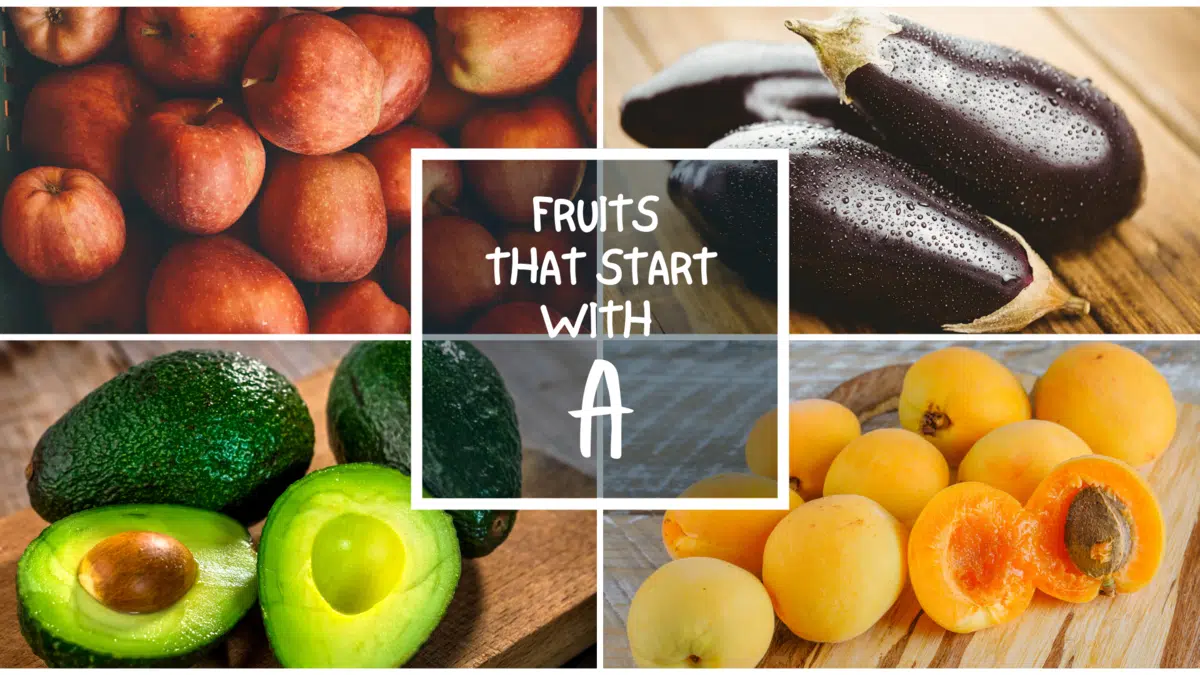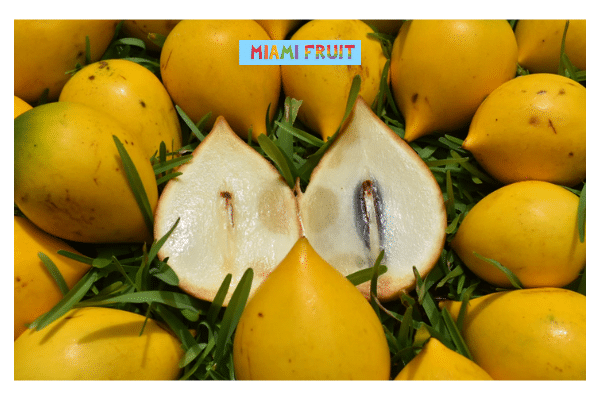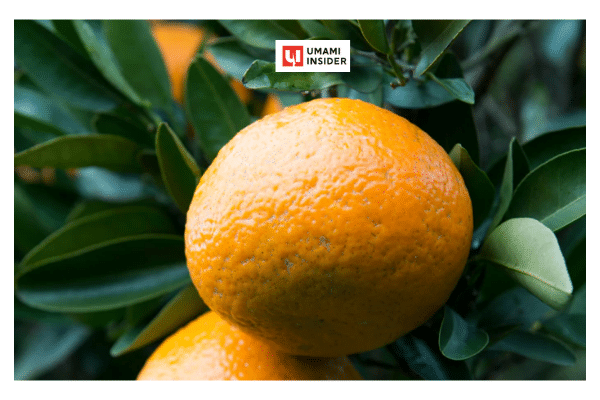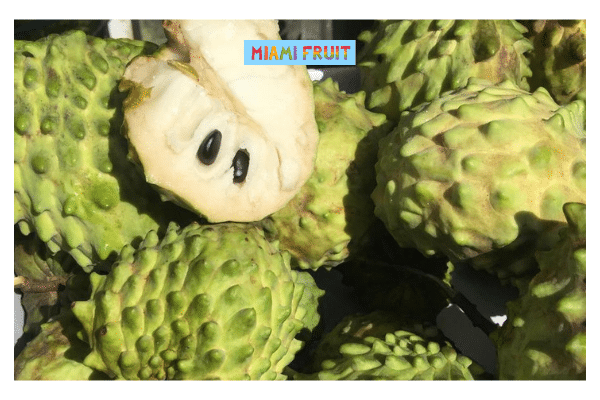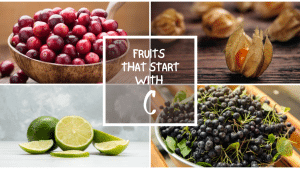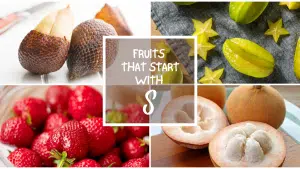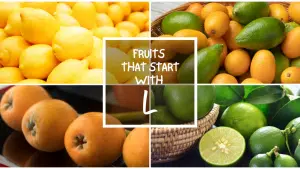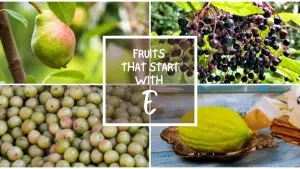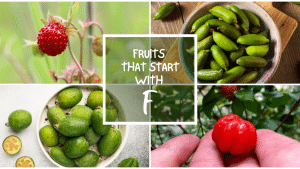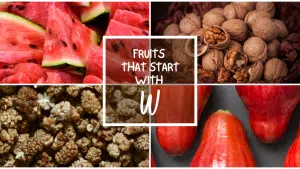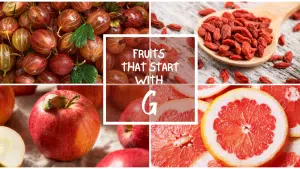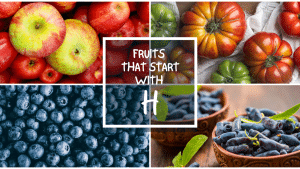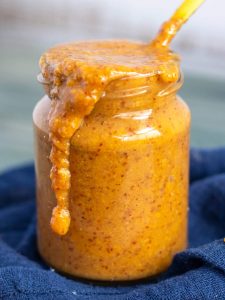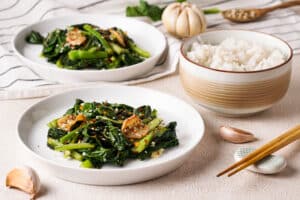All The Fruits That Start with A
Important Note: When you buy through our links, we may earn a commission. As an Amazon Associate we earn from qualifying purchases. Content, pricing, offers and availability are subject to change at any time - more info.
Maybe you’re looking to diversify your fruit intake with new and unique varieties. With so many fruit options in your grocery store’s produce section, it’s easy to forget that these aren’t your only options. Specialty markets, farm stands, and even the internet are all great places to look for new varieties of tasty and nutritious fruits. Take a look at some of the handful of delicious fruits, their history, and flavor profiles that begin with the letter “A.”
- Abiu
- Acai
- Akebia
- Amanatsu
- Ambarella
- Apple
- Apricot
- Asian Pear
- Atemoya
- Aubergines
- Avocado
- Azarole
- The Final Letter
Abiu
This vibrant tropical, tree fruit, scientifically known as Pouteria caimito, originated in the Amazonian proximity of South America. Specifically, abiu is most commonly found in Venezuela, Peru, and Columbia, however, they can also be found in Australia; it is not cultivated commercially in the US outside of Hawaii.
While the abiu’s bright yellow skin is tempting, it’s sadly inedible. The abiu’s pulp has the consistency of jelly and has a sweet flavor similar to maple syrup. In fact, one of the many delicious ways abiu is often used is in syrup, jam, and dressing recipes. It’s also often used in tropical yogurt, smoothie, and sherbet recipes.
Acai
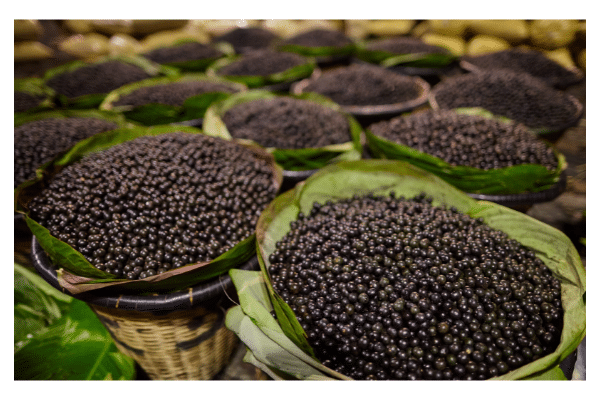
Hailing from the rainforests of South America, acai is a berry whose appearance is similar to a grape. Scientifically known as Euterpe oleracea, the acai berry has become wildly popular in recent years. Acai is a tree berry that is harvested from a specific species of palm trees. It’s reached such great popularity in the US, that acai berries can be found in most supermarkets and specialty shops, though it’s indigenous to Brazil.
Acai berries have a sweet and tart flavor and the smell has been likened to raspberries and strawberries. Though the acai’s taste is often compared to blackberries it’s said to also leave a dark chocolate residual taste. Although they can be eaten whole, other popular preparations include acai bowls which are comparable to smoothie bowls as well as in oatmeal, smoothies, salads, and yogurt. Of note, acai berries are rich in antioxidants that boost immune health as well as reduce inflammation.
Akebia
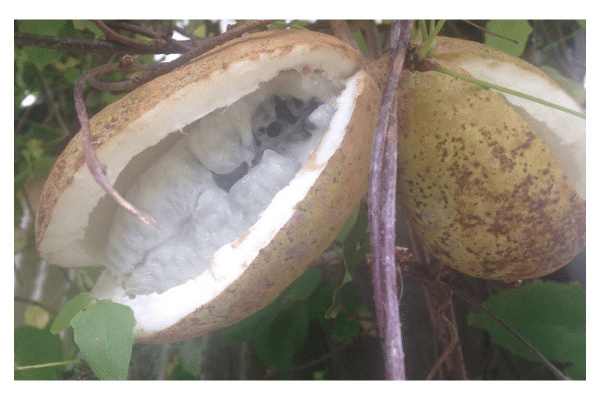
Scientifically known as akebia quinata, this mild fruit native to Japan only started being cultivated within the last 20 years. Prior to the onset of its cultivation, akebia was a wild, mountainous, vine fruit that is quite versatile. Harvested for a two-week window at the start of the fall season each year, akebia is highly sought-after. The white fleshy interior of akebia is rich in texture while slightly sweet and a bit sour in taste. The purple skin of the fruit can be cooked and eaten as well; the skin is typically fried or sauteed and prepared and served as a vegetable.
Although backyard gardeners have been growing akebia stateside for quite some time, it’s rather difficult to purchase it commercially. However, some specialty markets in the US may carry this tasty fruit. Colloquially referred to as “chocolate vine,” this fruit has a subtle chocolate smell. More often than not, the pulp of akebia is eaten straight from its pod in its whole form and although the skins can be cooked and seasoned to take on new flavors, akebia isn’t key to any particular dish or recipe. Lastly, akebia is high in dietary fiber, calcium, potassium, phosphorus, and Vitamin C; akebia has long been used as a natural remedy for headaches, reducing fevers, and a host of other maladies.
Amanatsu
This Japanese citrus fruit is vibrant orange in color and is natively known as natsumikan. Native to Yamaguchi Prefecture the amanatsu was first discovered in 1870 A.D. Seemingly a hybrid between pummelo and citrus fruit of unidentified origin, the amanatsu is akin in size and shape to a grapefruit, though it looks almost like an orange. Aromatic and juicy, the amanatsu is both sweet and sour in taste; its flavor is most similar to a tangerine, however.
Indigenous to Japan, the amanatsu is not commercially grown outside of East Asia. Unfortunately, therefore, this lovely fruit is not available in the US. The amanatsu’s 12 fleshy segments can be eaten whole but the fruit is also used in a number of Japanese recipes including sashimi platters and a number of sweet pastries. Additionally, juicing and zesting amanatsu is another common practice. Enjoyed for the delectable taste, amanatsu is also a go-to source of Vitamin C, potassium, folate, and vitamin B1 among others.
Ambarella
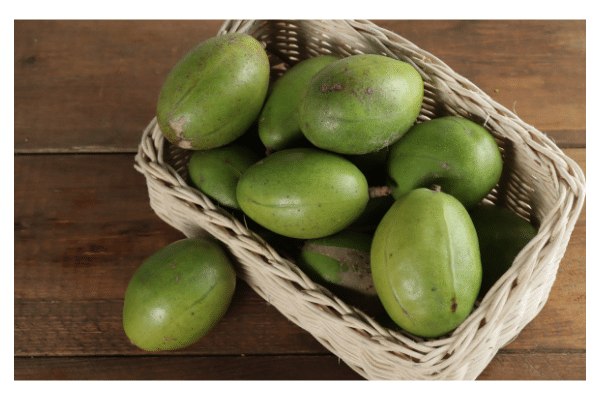
Scientifically known as Spondias Cytherea, known as a golden apple in the Caribbean, and most popularly called the ambarella, this sweet fruit is native to Sri Lanka. This pulpy fruit resembles an unripe mango and has a fibrous, inedible pit at its center. Indigenous to South Asia, the ambarella can also be found in some South American countries as well as some countries in the Caribbean. The ambarella can also be grown in the US as well as purchased in specialty grocery stores.
Ambarella is meaty and juicy and has notes of pineapple and mango as far as taste goes. A bit sweet and a bit sour, the meat of ambarella is crispy and firm. Ambarella can be tastily enjoyed whole, juiced, or used in popular Asian dishes such as Sri Lankan Curry and Pickled Ambarella. Concerning its nutrition value, ambarella is rich in vitamin C and, as such, naturally supports the immune system. Moreover, ambarella also naturally contains collagen and antioxidants, both of which have health benefits.
Apple

The Malus Domestica, or apple, is a sweet and crunchy fruit that originated in Central Asia. Though the apple was first discovered in Kazakhstan near the Caspian Sea, it is now cultivated globally. In fact, it’s the most widely recognized and commercially grown fruit in the world. Astonishingly, there are more than 7,000 recognized varieties of apples in the world, 100 of which can be found in the US. Apples grow in warm, summer weather and are fully ripe and ready to harvest in the early weeks of Fall.
Furthermore, apples can be enjoyed whole and both the skin and flesh are edible. Fully-ripened apples have an aroma akin to a tomato although most are nearly odorless. Apples are firm and crispy in texture and fresh and sweet in taste.
Besides a favorite American snack that can be deliciously dipped in condiments such as peanut butter or caramel sauce, they are a mainstay of many popular American dishes, some of which include apple pie, applesauce, baked apple chips, apple fritters, sliced in salads, apple cider, and many others. Noted for containing nutritious amounts of vitamin C and fiber, as the old adage claims, “An apple a day keeps the doctor away.”
Apricot
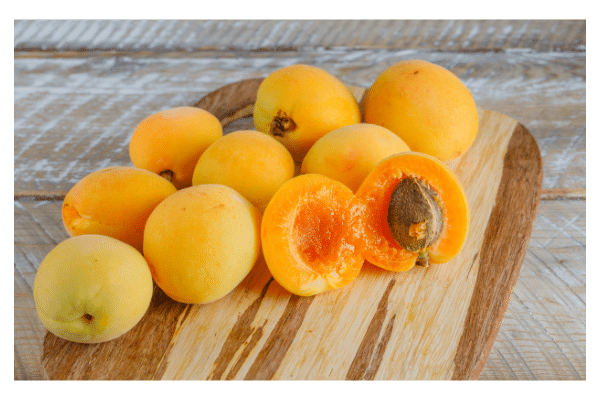
Prunus Armeniaca, better known as apricots, are indigenous to China and other Asian countries; they were first discovered in these parts as early as 2,000 B.C. A close relative to peaches and cherries, apricots grow on trees in the spring and are harvested in early summer. Today, apricots are commercially grown globally; most of the US’s production of apricots comes from California, though they can be purchased commercially nearly everywhere stateside.
Apricots are medium in size, have a stone-pit center, and both the flesh and pulp are edible. Commonly eaten whole and dried, apricots have a sweet, mild flavor and the texture is similar to a peach’s. Furthermore, apricots have a light, agreeable floral scent. Although they can be eaten whole or dried, apricots are highlighted in many delicious recipes such as cobbler, cookies, scones, smoothies, Apricot Chicken, and many other tasty recipes.
Lastly, apricots are nutrient-rich and a wonderful addition to a well-balanced diet. Apricots contain beneficial vitamins such as A, C, K, and E as well as minerals such as potassium and phosphorus. Moreover, apricots are rich in dietary fiber, making them a perfect for a well-rounded diet.
Asian Pear

The Asian Pear is scientifically dubbed the Pyrus Pyrifolia, however, it’s also commonly referred to as the Japanese pear and the zodiac pear among other monikers. Originating in both China and Japan, the Asian Pear was introduced to the US by Chinese immigrants in the 19th century. Although it’s not a common grocery store item, Asian Pears can be purchased at specialty and gourmet shops in the US.
The texture of Asian Pears is akin to an apple or water chestnut and they’re nearly odorless. Both the skin and pulp of Asian Pears can be eaten whole and they have a mild, refreshing, sweet flavor. Commonly peeled and added to salads, poached in dessert recipes, and used in marinades for Asian barbecue, the Asian Pear is versatile and delicious. Wonderfully, Asian Pears consist of minerals like potassium and magnesium, among others, which purportedly support blood pH levels.
Atemoya
The Annona × atemoya is a hybrid of two fruits and is indigenous to Central America. It is a natural crossbreed of cherimoya and sugar apples. Flourishing in warm climates, the atemoya can now be found in Australia and some southern US states. Although you can purchase atemoya locally in states like Florida and Hawaii, it’s difficult to acquire in other parts of the country; however, atemoya can be purchased from web dealers stateside.
Similar in appearance to an artichoke, atemoya is a tree fruit with white flesh that tastes sweet and tart. With hints of tropical flavors, the atemoya is a delicious fruit to enjoy whole. The fruit’s white flesh is the consistency of custard so it’s usually eaten with a spoon. The juicy, sweet flavor combined with its unique texture is suggestive of a tropical colada.
Furthermore, although atemoya is most commonly eaten whole, it has found its way into several sweet recipes such as smoothies, sorbet, and cakes. Finally, atemoya is known to be high in both potassium and vitamin C as well as other desirable nutritious properties.
Aubergines

This ever-popular fruit is better known by its English moniker: eggplant. Aubergines are cultivated globally but descend from Northeast Africa. However, after making its way to Europe, the French, who dubbed it aubergine, introduced them to the US where Americans call them eggplants. Commercially available at most US grocery stores, farmers’ markets, and beyond, aubergines are very popular.
Aubergines can be enjoyed both raw and cooked, though cooking them is more common. They have a mild, earthy flavor, and the texture is a bit less firm than an apple. There are many popular cooked preparations of aubergines, however, care must be taken when cooking them; if overcooked, the flesh is reduced to a mushy slime. Some common aubergine preparations include eggplant parmigiana, roasted eggplant, aubergine pasta pie, and aubergine soup to name a few. Lastly, aubergines are packed with vitamins and antioxidants.
Avocado

One of the most popular American fruits, the avocado is sometimes confused for a vegetable. Indigenous to the Western Hemisphere and predominantly found in Mexico and other warm climates, the avocado’s scientific name is Persea Americana but is also referred to as an alligator pear.
Avocados are known for their fresh, earthy, and mildly nutty flavor; they’re smooth and buttery in texture and have a subtle, sweet smell. Avocados pair well with most anything as they take on the flavor profiles of other ingredients. Perfect for adding to breakfast meals such as toast and eggs, excellent on sandwiches, and best known as the star ingredient of guacamole and other Mexican dishes, avocados are versatile and delicious. In fact, avocados are often eaten straight from their skin as they are a tasty and nutritious fruit in their own right.
Speaking of nutrition, avocados are nutrient-rich; they’re packed with healthy fats and they’re a noteworthy source of vitamins C, E, K, and B6. Easy to acquire in grocery stores and farmer’s markets throughout the US, avocados are incredibly popular in the states.
Azarole
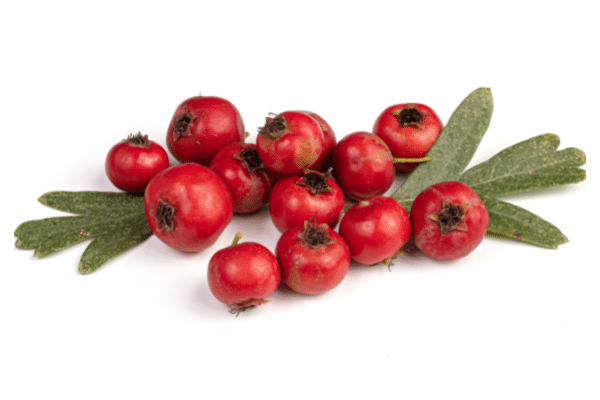
Azarole is a small blueberry-sized fruit that’s a vibrant red in color. Scientifically dubbed the crataegus azarolus, the azarole is native to the Mediterranean. Hailing from a species of the Hawthorn tree, the azarole fruit can be grown by home gardeners though it’s not a popular commercial fruit; however, it can be found in some specialty and gourmet stores as well as online.
These small berries are pleasantly sweet and juicy; however, like blueberries, they don’t contain much meat. The aroma of these lovely berries is rather mild and is similar to orange blossoms. Although azaroles are suitable for eating whole, they’re also the perfect size, texture, and sweetness for making jams, jellies, and compotes. Another popular preparation for these delectable berries is to infuse liquids such as brandy or seltzer.
The Final Letter
From A to Z, there are so many commercial and non-commercial fruits to add to your bucket list. Whether you’re a foodie, chef, or just someone interested in diversifying your diet, these A-letter fruits are worth a try. In fact, going through the list alphabetically is a fun way to work your way through new fruits.
